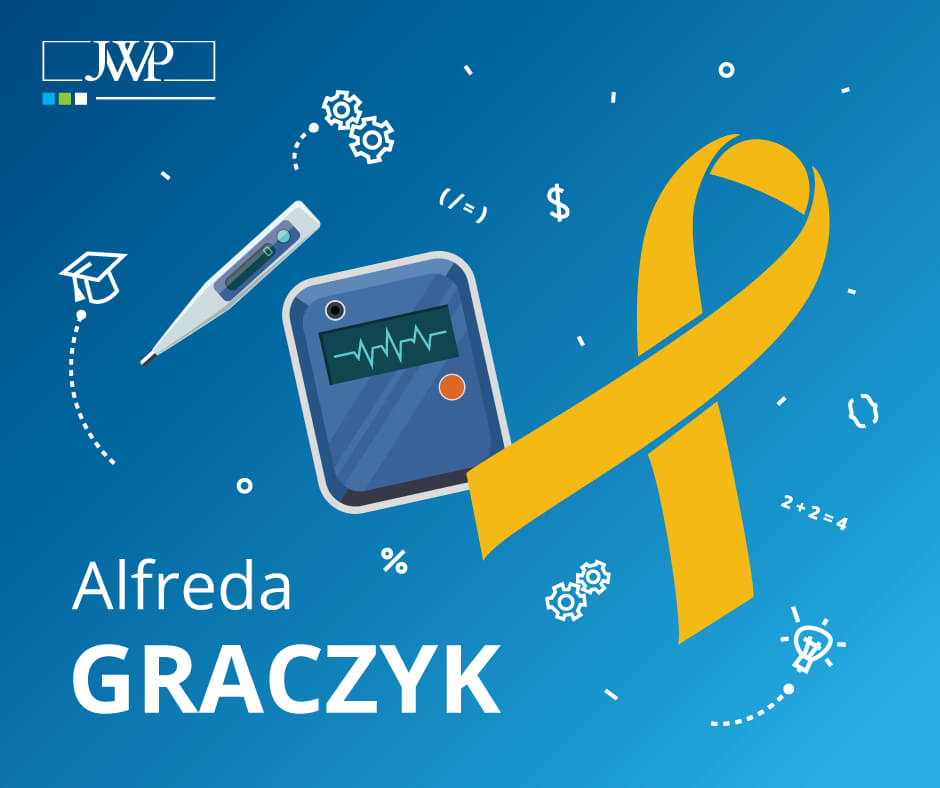Professor Alfreda Graczyk’s discovery of the efficacy of using photosensitizers to diagnose and treat cancer has brought the medical world closer to inventing a successful cancer treatment that will save the lives of millions of people.
Even though medicine has made a lot of progress in the fight against cancer over the years, far too many people still die as a result of delayed diagnosis and ineffective treatment methods. Professor Graczyk’s photodynamic method appears to be a promising technique that gives hope that cancer-related mortality rates can be seriously reduced.
Aiding oncological progress
Professor Alfreda Graczyk is well known in oncological circles. She specializes in physicochemistry of complex compounds, clinical biochemistry, and the use of laser in medicine. With the support of her team, she brought to Poland the photodynamic diagnosis (PDD) method and photodynamic therapy (PDT) for destroying tumours, which can also be applied to other conditions, such as skin disease. Using this therapy, cancerous tissue is destroyed selectively, without causing unnecessary damage to surrounding healthy tissue. Its side effects are therefore much more tolerable than those of standard therapies, such as surgery, radiotherapy, and chemotherapy.
Professor Graczyk’s great accomplishment in the field of oncology is the co-creation of patents for technology aimed at obtaining and purifying a novel class of photosensitizers used in the photodynamic method of diagnosing and treating tumours. To date, her team’s diamino acid photoporphyrin derivatives (PP(AA)2Arg2) have been granted patents in 25 countries [1]. This compound is obtained from heme, the red blood cells of expired blood (i.e. the waste from blood-collection centres). In addition, photosensitizers of this type are ten times cheaper than those produced in the US [2].
PDT is used to treat both oncological (e.g. tumours of the head, neck, lungs, oesophagus, pancreas, bladder, and reproductive organs) and non-oncological diseases (such as lichen sclerosus, Staphylococcus aureus, or papillomatosis) [3]. Photodynamic therapy is not particularly complex. It requires three components:
- A photosensitizer – to sensitize tumour tissue to light
- A light source – to induce the photosensitizer accumulated within the tumour
- Oxygen that is dissolved in the tissue [4].

A long list of achievements
Professor Graczyk is also the proud author of other highly reputable achievements. She has published more than 120 scientific papers and is the holder and co-holder of five patents. In Poland, she launched a research programme aimed at defining the levels of bio elements and toxic metals in the human body. Some of her other noteworthy achievements include inventions and co-inventions for obtaining calcium-magnesium, zinc, and zinc-magnesium supplements, which are now being used in pharmaceutical production plants [5]. She has also been awarded many prestigious prizes, including the Golden Medal from the World Intellectual Property Organization in 1994.
Although she graduated from Warsaw University’s Faculty of Chemistry, she spent her scientific career at the Military Technical Academy – first at the Faculty of Chemistry and Technical Physics and later at the Institute of Quantum Electronics and the Institute of Optoelectronics.
Professor Alfreda Graczyk’s work on increasing the effectiveness of the photodynamic method not only constitutes a prestigious challenge, but also reflects her determination to save millions of people from becoming sick or losing their lives.
Sources:
- A. Nowak-Stępniowska, P. Pergoł, A. Padzik-Graczyk, Metoda fotodynamiczna diagnostyki i leczenianowotworów — mechanizmy i zastosowania
- H. Kleszcz, Jubileusz – 80. rocznica urodzin prof. dr hab. Alfredy Padzik-Graczyk
- E. Jankiewicz, Jubileusz Profesor Alfredy Graczyk
- Fundacja QLT, Alfreda Graczyk


